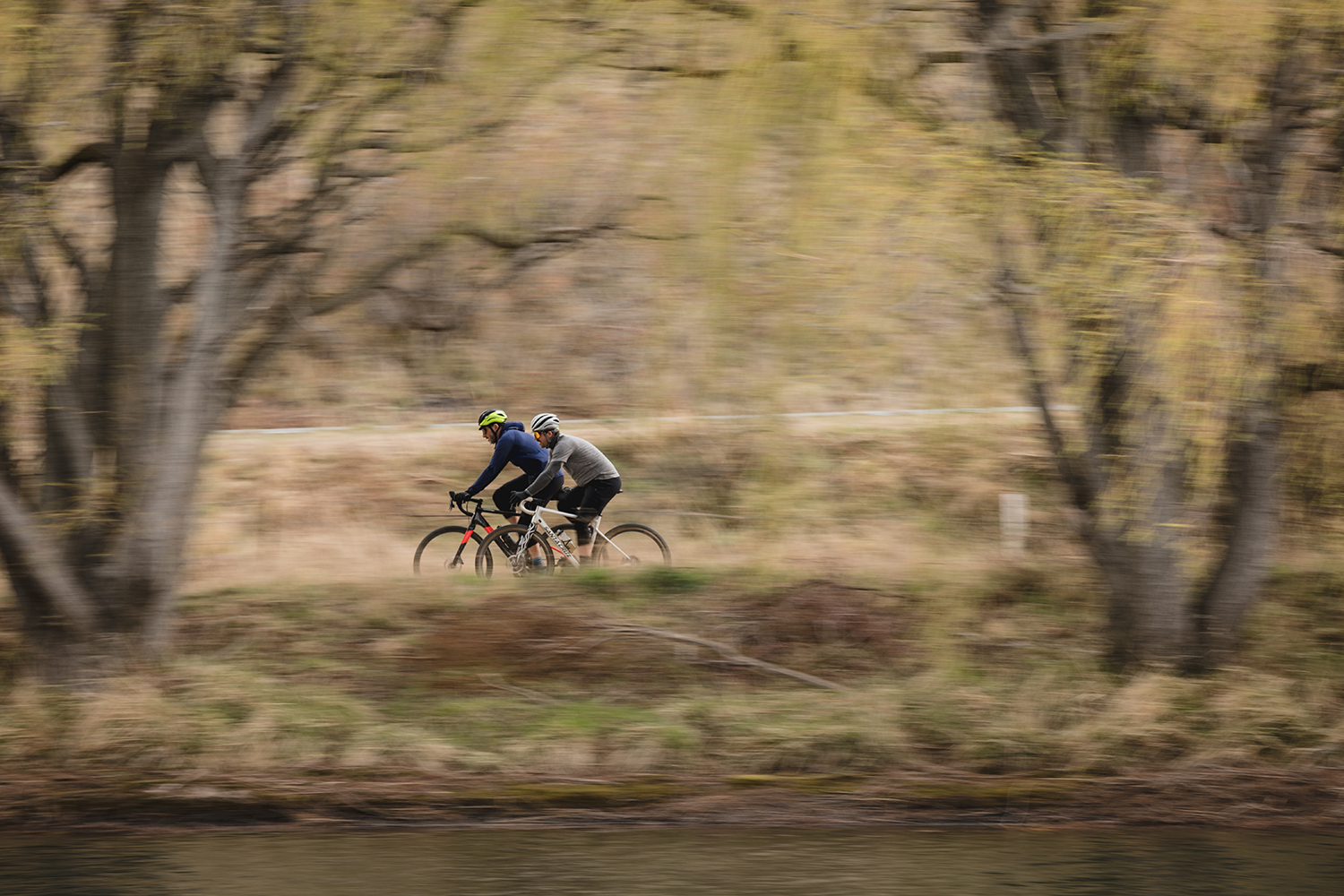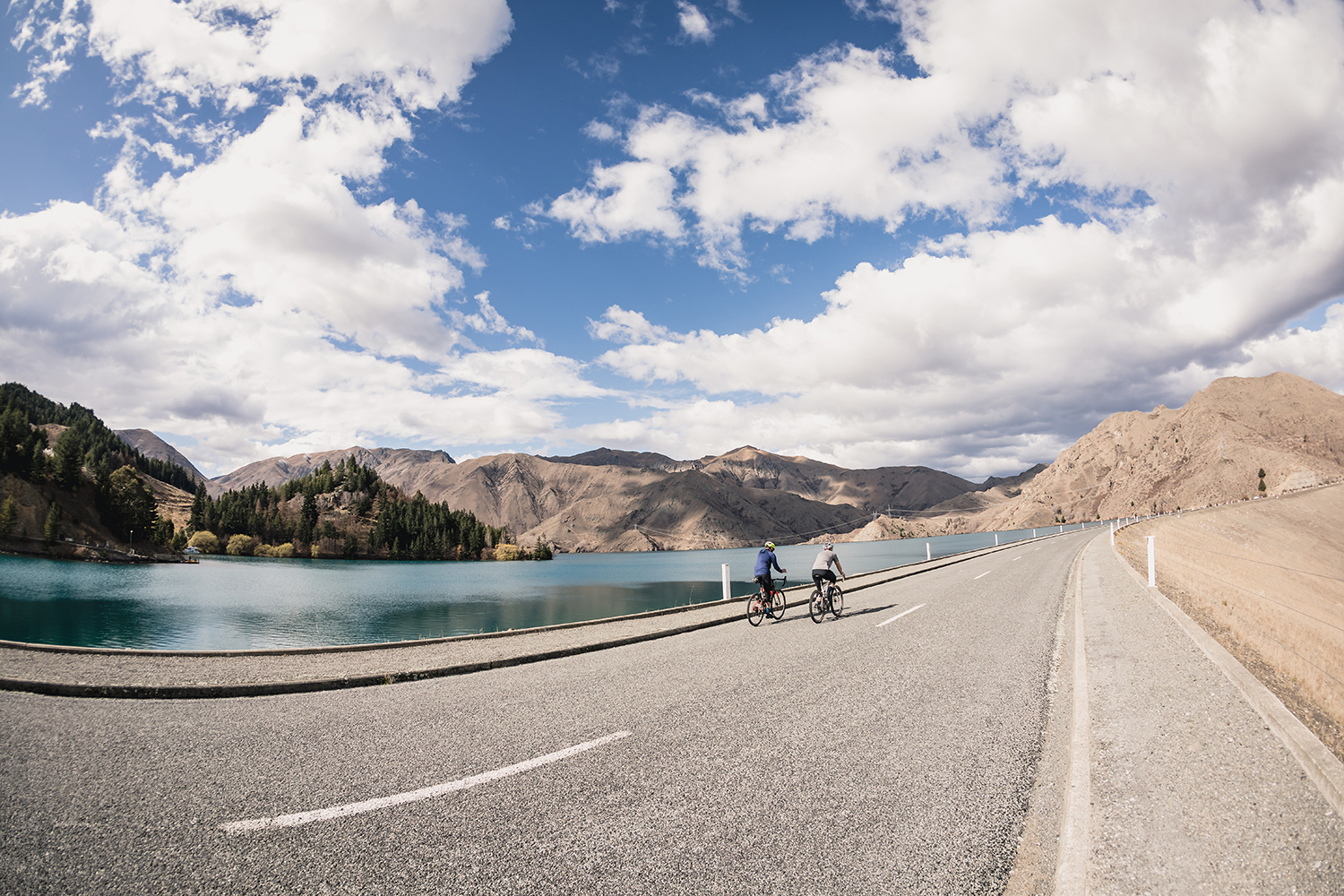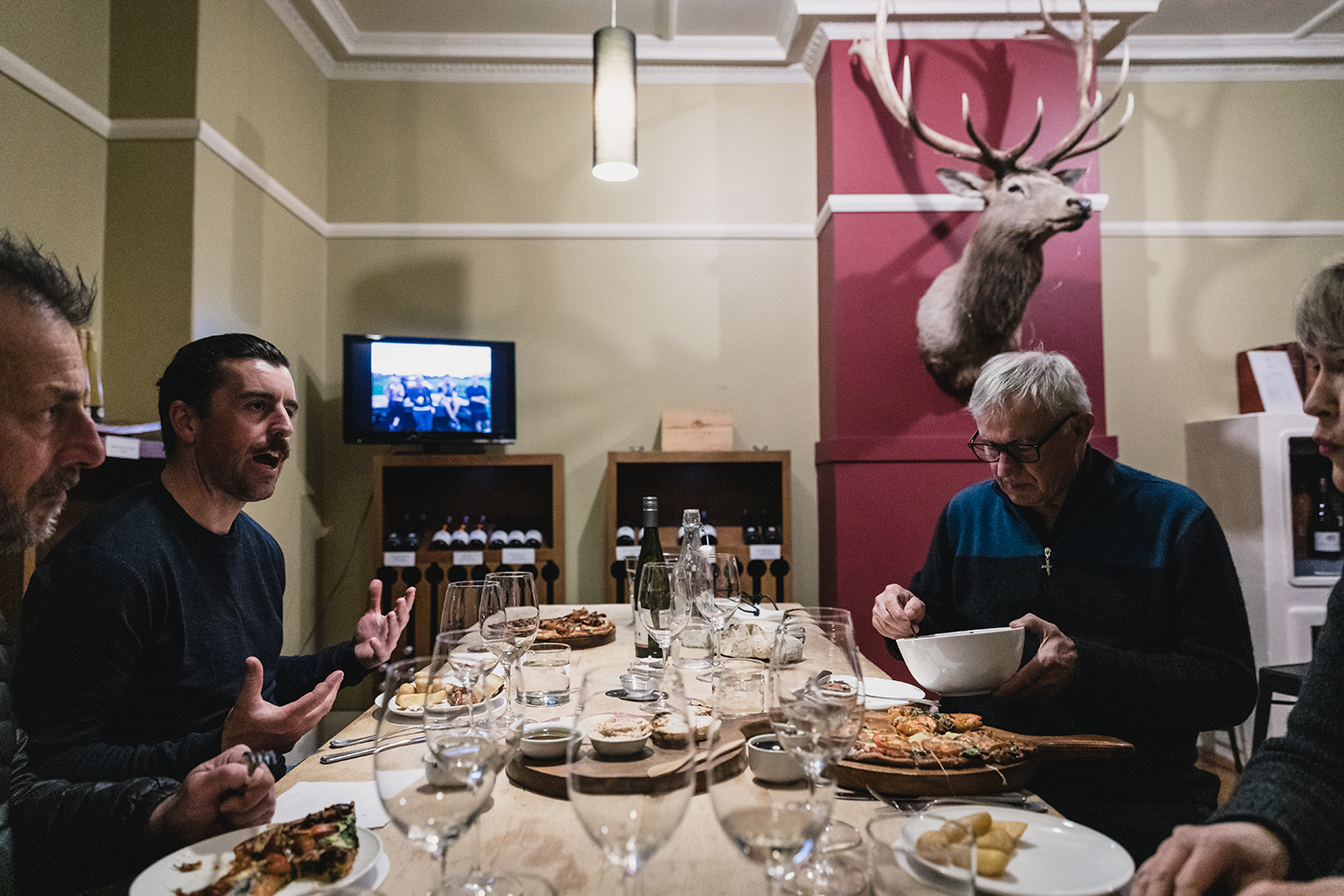Words: Liam Friary
Images: Cameron Mackenzie
The Alps 2 Ocean Cycle Trail is a 300km, mostly-off-road, cycling route which travels from the slopes of our highest mountain, Aoraki/Mount Cook, right down to the Pacific Ocean at Ōamaru. It passes through myriad dramatic landscapes, traverses a few of the most iconic southern locations and calls into some of the finest gems our country has to offer – where the people are also a real highlight. As the seasons switched from winter to spring, we headed south for this journey, but the grip of winter hadn’t left yet.
Read Pt. 1 here.
Ōhau – the adventure around Ōhau Weir was fun and flowy; the trail hugs the shores of Lake Ōhau. The views are splendid – the Ben Ōhau range soars high out of the lake and Aoraki/Mt Cook stands sentry in the distance, watching over the northern end of the lake. The mountains had a fresh dusting of snow on them, which reminded us that we were at the mercy of whatever weather they could throw at us. As we rolled into Ōhau, we experienced its unique charm and tree lined streets replicating scenes from an American mountain town.

Lake Ōhau Lodge has a ton of old school vibe. We rolled in during the late afternoon, and there were skis, cars and people everywhere; music blaring. This is the base for Ōhau’s boutique ski field, and is an idyllic location with the mountain behind it and Lake Ōhau out the front. It’s here we had a few pints at the bar and a plate full of nachos – and when I say, ‘plate full’, I mean it’s overflowing. There’s no skimping down here. The place is littered with old school paraphernalia – from skis and pictures to couches and even the carpet! It has real ‘70s flair. It feels like your nan’s house, or an old bach; it’s a place you just want to hang out. The three-course set menu was divine, along with the hospitality. Our bodies were well rested before we tackled a deluxe cooked breakfast the next morning. It was definitely a little hard to leave this joint.
Out the gate, we tackled the Tarnbrae, which is a great section of the trail. It snakes its way through beech forests and out into the open, following the ridge line upwards. The range takes you up to 900m, with Aoraki/Mt Cook ever-lurking in the background. Across the top section, there’s pretty harsh trail conditions to tackle on rigid drop bar bikes. Large rock boulders needed to be dodged as we climbed out of Lake Ōhau and descended down into open valleys. Eventually, the trail led us out on double-track through amber grasslands. It’s here that the sheer sparseness gives a sense of the years gone by; this was especially felt when we visited the historic woolshed. This is based in Quailburn, which was once part of the vast property known as Benmore Run, one of the largest properties in Otago during the 1870s. Sheep mustering on the Quailburn hills made for a harsh life, and interpretation panels installed in the old woolshed detailed some of the hardships endured. The woolshed is a beech pole construction and was built in the 1920s. The sheep-dip lies near the shed, with the yards and race still standing. It gives you a glimpse of the tough times and people of the earlier years, and put our supposed hard ride in context.
En route to Omarama, and our digs for the night, we took a slight detour to the Clay Cliffs. I’d suggested this detour, as this place is totally unique and something I didn’t really expect to see in Aotearoa. While cliff landscapes almost look out of place in our country, the Clay Cliffs are a geological wonder and an aspiring Global Geopark, made up of ‘Badlands’ style sharp pinnacles and ridges separated by steep and narrow ravines. The Cliffs were created out of layers of silt and gravel deposited by ancient glaciers around 20 million years ago. These layers were compressed, then uplifted by geological activity in the area then, as the high points began to erode, pinnacles were left behind.




Omarama – the small, quiet country town with one pub. It’s here we had some amazing southern hospitality; a really large but delicious dinner, washed down with a pint of Speights whilst watching the North vs South rugby game. Doesn’t get more southern than that! Of course, we kept our Aucklander status on the down low – and when North scored, no one clapped – I soon learned I’d need to support the South in this pub. The game was a real old school battle that felt right to be watching in Omarama. South pipped it in overtime and the pub erupted. A bloody good night!
I have to say, the trail is honest to its word; Alps 2 Ocean. As it heads away from the alps to the ocean is takes you through an amazing range of scenery and terrain. The trail that followed on from Omarama had rolling terrain and green pastures filled with sheep. It was a far cry from the high mountains of the Mackenzie Region, but we welcomed the change in scenery. The flow of the river meanders down towards the ocean and so too does the cycle trail. Perhaps not the exact same route but, with its twists and turns, the rivers is never far away. This is the Waitaki River, which drains the Mackenzie Basin and runs some 110 kilometres south-east to the Pacific Ocean.
The river is the site of many hydroelectricity projects. The Waitaki dam was built first, between 1928 and 1934 – without earth-moving machinery. Lake Pukaki was initially dammed between 1945 to 1951, to provide storage and flow control. This was followed by the Benmore Dam, creating Lake Benmore, in 1965. The Aviemore Dam was then commissioned in 1968, creating Lake Aviemore. The trail dances and weaves its way around these lakes and dams. The Lake Benmore section is due for more trail expansion, with a super scenic singletrack under construction. This new section, opening in the coming months, will mean the end of any State Highway riding on this trail.

Kurow – quaintness and real country character greeted us as we bowled into town amid brief showers. The town is nestled in the Waitaki Valley and the high mountains that surround it were layered in thick black cloud. I was thankful to be getting off the bike at this point. After a scrub up, we visited Ostler Wines. The locals of the region, Jim and Anne Sinnott Jerram[CM1] , swung open their doors for us and welcomed us in like one of their own. They’ve converted the old post office into their cellar door. Long conversations smattered with sips of fine vino and wedges of cheese followed. Jim and Anne both bike and could relate to our stories; they understand why the trail has become so popular. They are incredibly genuine and it’s their hard yakka that has made the winery work. Jim spent his youth on Minaret Station, so knows a thing or two about hard work.
Jim was kind enough to show us around the winery. The rolling vistas and slope of the land help the grapes grow in this relatively new area for wine. However, Central Otago is just over the hill, so it makes sense for this area to see more wineries popping up. Jim’s passion is infectious, he’s proud of what he’s created – and rightly so. There are no easy yards with wine – you’re at the mercy of the land and weather. Being our newfound friend, Jim showed us around the winery before taking us flying. Yes, flying! His neighbour owns an old school ski plane, and Jim’s other passion happens to be flying – so, why not?! We took in the sights of the Southern Alps, which gave us real perspective of the land we’d traversed by bike. While Jim’s interests stretch from wine-making to flying, what really stands out is his southern hospitality and charm. If it wasn’t for the bike taking me into places like Kurow, I may have never met Jim. I like the fact these small towns get opened up by way of cycle trails going through them.

Ōamaru – it’s got style and historic character. Before we reached the seaside town, we traversed rolling green pastures and large boulders surrounded by limestone escarpments. We reached the distinctive Elephant Rocks, which are similar to Stonehenge. This is quite a site (and a sight!) with grey statue-like rocks set amongst lush green pastures. After that, we descended down one of the best parts of the trail into Rakis Railway Tunnel, then onto a fast and flowy trail. I’m not sure if it was because it was downhill and we could ride at more speed, or that the ride was nearing the end, or that the trail was in good condition. Either way, Bob and I had a ton of fun on this section.
We ended the Alps 2 Ocean journey on the Pacific Ocean in Ōamaru. This place has a ton of heritage. We pedalled through the once-working port and down the lanes with their old buildings – being on a bike allowed us to take in the surrounds. Ōamaru is steeped in Māori and early European settler history. Victorian streetscapes, museum collections, Steampunk HQ and gorgeous galleries filled with local art meant there was something to look at everywhere we turned. It’s no secret that the reason the buildings are so great is because, in the boom time of the late 1800s, these amazing structures were built on credit – and the promise of a future prosperity that never quite materialised. This meant hard times for those involved in the town’s economic downturn, but it now means the buildings largely remain true to their Victorian heritage. Over the last 20 years the town has really started to re-invent itself, becoming one of the first New Zealand towns to realise its heritage was an asset. To this day, 70 buildings are registered as Category 1 or 2 Historic Places on the Heritage New Zealand register, making Oamaru worthy of a visit as we move through hard economic times ahead.
This is part of the country that offers so much. From the epic mountains and rolling country hills to the old town on the sea. It offers diversity and uniqueness but most of all it holds its own charm. The history goes back a long way and you can feel the ‘mana’ of the area. The people make this place shine and it’s those experiences we held true when we returned home. We wouldn’t have seen most of these places in a car, or whizzing past on a tour bus. The immersion of being out there amongst the land means we were completely focused on the journey, not the destination. This fills your tank, even when you didn’t realise it was empty. After riding with the glacial flow in early spring, a return during our autumn or summer season has just been added to our list of things to do.
A big thanks to Tourism Waitaki and the Alps 2 Ocean community for hosting us on this journey. And we’d like to wish Ōhau Village and surrounding area which was recently devastated by NZ’s largest wild fire (Lake Ōhau Lodge was completely spared) a strong and quick recovery.

